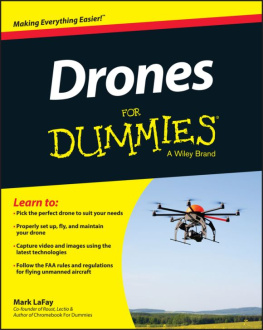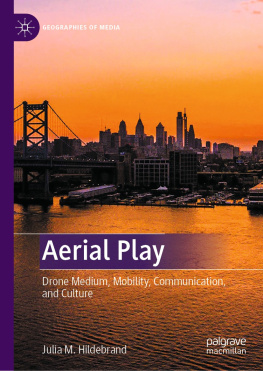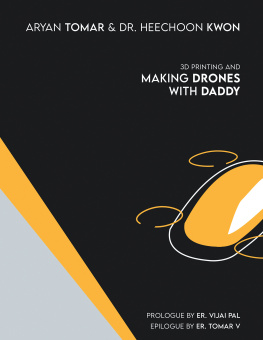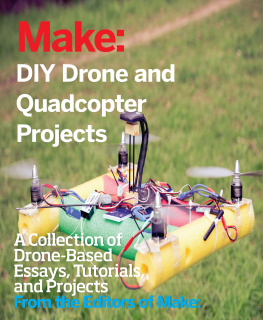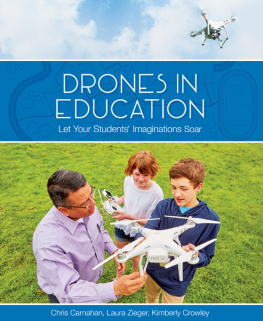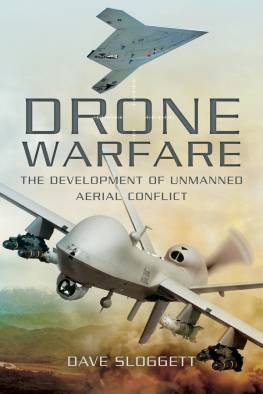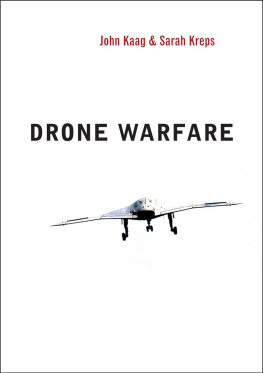
Drones and Journalism
Drones and Journalism explores the increased use of unmanned aerial vehicles, or drones, by the global media for researching and newsgathering purposes. Phil Chamberlain examines the technological development and capabilities of contemporary drone hardware and the future of drone journalism. He also considers the complex place of the medias drone use in relation to international laws, as well as the ethical challenges and issues raised by the practice.
Chapters cover topics including the use of drones in investigative reporting, in reporting of humanitarian crises, and the use of this new technology in more mainstream media, such as film and TV. The book also presents exclusive interviews with drone experts and practitioners and draws on a wide range of disciplines to put the practice into a historical, political and social context.
Professionals and students of Journalism and Media Studies will find this an important critical contribution to these fields, as Phil Chamberlain astutely charts the rise of the reliance on drones by the media worldwide.
Phil Chamberlain is Associate Head of the Department for Broadcast & Journalism at the University of the West of England, UK. He has 20 years experience as a journalist, and has worked for UK national newspapers on investigative projects. He is the co-author of Blacklisted: The Secret War between Big Business and Union Activists (2015).
Drones and Journalism
How the Media is Making Use of Unmanned Aerial Vehicles
Phil Chamberlain
First published 2017
by Routledge
2 Park Square, Milton Park, Abingdon, Oxon OX14 4RN
and by Routledge
711 Third Avenue, New York, NY 10017
Routledge is an imprint of the Taylor & Francis Group, an informa business
2017 Phillip Chamberlain
The right of Author to be identified as author of this work has been asserted by him in accordance with sections 77 and 78 of the Copyright, Designs and Patents Act 1988.
All rights reserved. No part of this book may be reprinted or reproduced or utilised in any form or by any electronic, mechanical, or other means, now known or hereafter invented, including photocopying and recording, or in any information storage or retrieval system, without permission in writing from the publishers.
Trademark notice: Product or corporate names may be trademarks or registered trademarks, and are used only for identification and explanation without intent to infringe.
British Library Cataloguing-in-Publication Data
A catalogue record for this book is available from the British Library
Library of Congress Cataloging-in-Publication Data
A catalog record for this book has been requested
ISBN: 978-1-138-66878-2 (hbk)
ISBN: 978-1-315-61847-0 (ebk)
Typeset in Times New Roman
by Apex CoVantage, LLC
Contents
The author would like to thank all of those who took time to be interviewed for the book. Any errors are the authors and not the interviewees. The author would also like to thank his colleagues at the University of the West of England for their support, ideas and encouragement.
There were no regular inhabitants of the village, but often people visited it to practice fighting. The village sits on Salisbury Plain, a huge swathe of England used by the British Army since Napoleonic times to train its troops. In 1990 the village had been modelled to look German but as threats changed so had its look.1 In 2008 when I visited, it was a melange of Iraq and Afghanistan and was hosting a competition.2
The object of the competition was to come up with a system to help ground troops enter just such a village and deal with various hostile forces from snipers to improvised explosive devices (IEDS). There were half a dozen teams and each was made up of small companies and a university. They were demonstrating to various men from the ministry how their systems worked in the hope of securing a contract. It was deliberate that universities and small companies had been paired, as the ministry was looking to increase the range of organizations that might bid for contracts. Having studied the problem most of the teams had come up with some kind of drone as a focal point for their efforts.
In a small van packed with equipment and discarded coffee cups, staff from one of the teams were checking on the progress of their various appliances several hundred yards away. One of the university engineers, unshaven, having spent two days living in an army tent and clearly enjoying every minute, talked through what I could see on a monitor. What I could see were some very fuzzy pictures looking over the village. He pointed to a crumpled giant fly on the mud next to the truck. The weather has been difficult so weve had some losses but it is one of these that is sending these images back, he said. He picked it up and added as an afterthought: In ten years Sky News will have a fleet of these.
I looked dubiously at the fragile structure and then went back to the monitor. A truck with an anti-aircraft gun on the back was hiding behind a mosque. On the monitor it had been framed by white bars as its outline had triggered an alert from an algorithm which looked to match shapes seen by the drones camera to a visual dictionary of threats. The engineer had been ambitious in his prediction about the use of drones by the media, but not by much.
Take these headlines from the summer of 2016. An earthquake in Italy kills nearly 300 people and within 24 hours footage shot by drone of the devastation is aired on international news channels (Guardian 2016). In Virginia a 65-year-old woman shoots down a drone which has been flying over her house which borders that of film star Robert Duvall (Farivar 2016) while Utah becomes the latest state to give the authorities the power to disable drones in specific circumstances (AP 2016).3 There is a report of a near miss at Exeter airport between a drone and a passenger aircraft (Oldfield 2016). According to the UK union representing airline pilots, the number of reported incidents involving drone near-misses with planes has increased from 29 in 2015 to 42 by September 2016 (BALPA 2016). An air ambulance warns that the fictional plot in a soap opera about a drone bringing down a plane could come true (Bieber 2016). At a carnival in the English seaside resort of Swanage, the brochure has a map showing the parade route and details for when the Punch and Judy is on. There is also a notice that a drone will be flying overhead to gather publicity footage and who to contact if anyone is concerned.
From the serious to the banal and with a constant murmur of anxiety, the use of civilian drones, and in particular their use for newsgathering, has become increasingly prevalent. At the end of August 2016, the Federal Aviation Authority finally published its rules on the commercial use of small drones (FAA 2016). Matt Waite, from the Drone Journalism Lab at the University of Nebraska, said that as a result:
Its likely that many hundreds of the eventual thousands of licensed drone pilots will be journalists. Many of them are climbing that first hill this week and taking the test. The second big hill to climb is professionalizing operations in newsrooms.



